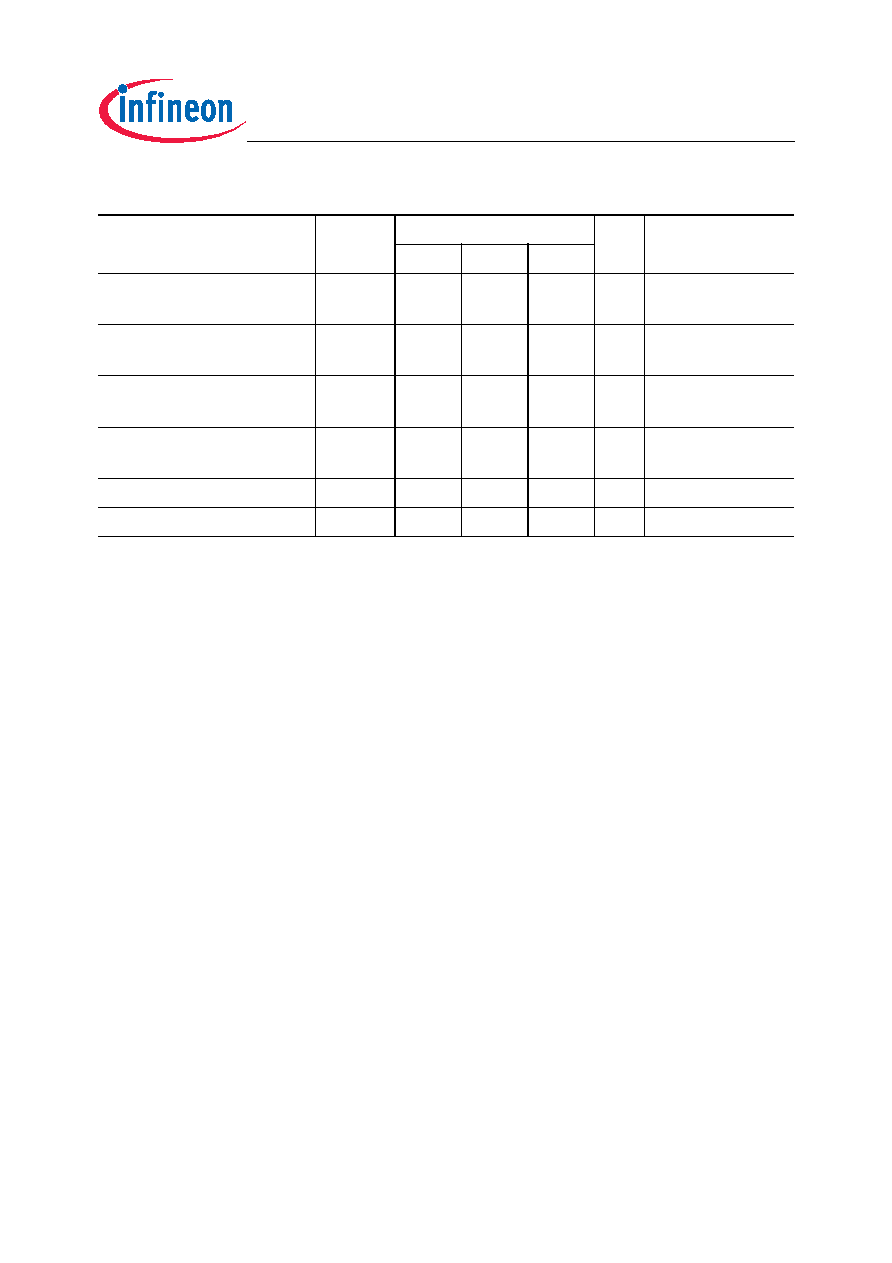- 您現(xiàn)在的位置:買賣IC網(wǎng) > PDF目錄98076 > SAK-XC2285M-104F80LAA (INFINEON TECHNOLOGIES AG) RISC MICROCONTROLLER, PQFP144 PDF資料下載
參數(shù)資料
| 型號(hào): | SAK-XC2285M-104F80LAA |
| 廠商: | INFINEON TECHNOLOGIES AG |
| 元件分類: | 微控制器/微處理器 |
| 英文描述: | RISC MICROCONTROLLER, PQFP144 |
| 封裝: | 0.50 mm pitch, GREEN, PLASTIC, LQFP-144 |
| 文件頁數(shù): | 130/142頁 |
| 文件大小: | 1112K |
| 代理商: | SAK-XC2285M-104F80LAA |
第1頁第2頁第3頁第4頁第5頁第6頁第7頁第8頁第9頁第10頁第11頁第12頁第13頁第14頁第15頁第16頁第17頁第18頁第19頁第20頁第21頁第22頁第23頁第24頁第25頁第26頁第27頁第28頁第29頁第30頁第31頁第32頁第33頁第34頁第35頁第36頁第37頁第38頁第39頁第40頁第41頁第42頁第43頁第44頁第45頁第46頁第47頁第48頁第49頁第50頁第51頁第52頁第53頁第54頁第55頁第56頁第57頁第58頁第59頁第60頁第61頁第62頁第63頁第64頁第65頁第66頁第67頁第68頁第69頁第70頁第71頁第72頁第73頁第74頁第75頁第76頁第77頁第78頁第79頁第80頁第81頁第82頁第83頁第84頁第85頁第86頁第87頁第88頁第89頁第90頁第91頁第92頁第93頁第94頁第95頁第96頁第97頁第98頁第99頁第100頁第101頁第102頁第103頁第104頁第105頁第106頁第107頁第108頁第109頁第110頁第111頁第112頁第113頁第114頁第115頁第116頁第117頁第118頁第119頁第120頁第121頁第122頁第123頁第124頁第125頁第126頁第127頁第128頁第129頁當(dāng)前第130頁第131頁第132頁第133頁第134頁第135頁第136頁第137頁第138頁第139頁第140頁第141頁第142頁

XC2287M, XC2286M, XC2285M
XC2000 Family Derivatives / Base Line
Electrical Parameters
Data Sheet
88
V2.0, 2009-03
Parameter Interpretation
The parameters listed in the following include both the characteristics of the XC228xM
and its demands on the system. To aid in correctly interpreting the parameters when
evaluating them for a design, they are marked accordingly in the column “Symbol”:
Absolute sum of overload
currents
Σ|IOV|
–
50
mA
External Pin Load
Capacitance
C
L
–205)
–
pF
Pin drivers in
default mode6)
Voltage Regulator Buffer
Capacitance for DMP_M
C
EVRM
1.0
–
4.7
μF
7)
Voltage Regulator Buffer
Capacitance for DMP_1
C
EVR1
0.47
–
2.2
μF
One for each
supply pin7)
Operating frequency
f
SYS
––80
MHz 8)
Ambient temperature
T
A
–––
°C
1) Performance of pad drivers, A/D Converter, and Flash module depends on
V
DDP.
2) Overload conditions occur if the standard operating conditions are exceeded, i.e. the voltage on any pin
exceeds the specified range:
VOV > VIHmax (IOV >0) or VOV < VILmin (IOV < 0). The absolute sum of input
overload currents on all pins may not exceed 50 mA. The supply voltages must remain within the specified
limits. Proper operation under overload conditions depends on the application.
Overload conditions must not occur on pin XTAL1 (powered by
V
DDIM).
3) Not subject to production test - verified by design/characterization.
4) An overload current (
IOV) through a pin injects an error current (IINJ) into the adjacent pins. This error current
adds to that pin’s leakage current (
I
OZ). The value of the error current depends on the overload current and is
defined by the overload coupling factor
KOV. The polarity of the injected error current is reversed from the
polarity of the overload current that produces it.
The total current through a pin is |
ITOT| = |IOZ| + (|IOV| × KOV). The additional error current may distort the input
voltage on analog inputs.
5) This is the reference load. For bigger capacitive loads, use the derating factors from Section 4.6.4.
6) The timing is valid for pin drivers operating in default current mode (selected after reset). Reducing the output
current may lead to increased delays or reduced driving capability (
C
L).
7) To ensure the stability of the voltage regulators the EVRs must be buffered with ceramic capacitors. Separate
buffer capacitors with the recomended values shall be connected as close as possible to each
VDDI pin to keep
the resistance of the board tracks below 2
Ω. Connect all V
DDI1 pins together.
The minimum capacitance value is required for proper operation under all conditions (e.g. temperature).
Higher values slightly increase the startup time.
8) The operating frequency range may be reduced for specific types of the
XC228xM. This is indicated in the
device designation (
…FxxL). 80-MHz devices are marked …F80L.
Table 13
Operating Condition Parameters (cont’d)
Parameter
Symbol
Values
Unit Note /
Test Condition
Min.
Typ.
Max.
相關(guān)PDF資料 |
PDF描述 |
|---|---|
| SAK-XC2285M-56F80LAA | RISC MICROCONTROLLER, PQFP144 |
| SAF-XC2287M-72F80LAA | RISC MICROCONTROLLER, PQFP144 |
| SAF-XC2285M-72F80LAA | RISC MICROCONTROLLER, PQFP144 |
| SAK-XC2723X-20F66V | 32-BIT, FLASH, 66 MHz, RISC MICROCONTROLLER, PQCC48 |
| SAH-XC2723X-20F66V | 32-BIT, FLASH, 66 MHz, RISC MICROCONTROLLER, PQCC48 |
相關(guān)代理商/技術(shù)參數(shù) |
參數(shù)描述 |
|---|---|
| SAK-XC2286-56F66L | 制造商:INFINEON 制造商全稱:Infineon Technologies AG 功能描述:16/32-Bit Single-Chip Microcontroller with 32-Bit Performance |
| SAK-XC2286-72F66L | 制造商:INFINEON 制造商全稱:Infineon Technologies AG 功能描述:16/32-Bit Single-Chip Microcontroller with 32-Bit Performance |
| SAK-XC2286-96F66L | 制造商:INFINEON 制造商全稱:Infineon Technologies AG 功能描述:16/32-Bit Single-Chip Microcontroller with 32-Bit Performance |
| SAKXC2286M104F80LAA | 制造商:Infineon Technologies AG 功能描述: |
| SAK-XC2287-56F66L | 制造商:INFINEON 制造商全稱:Infineon Technologies AG 功能描述:16/32-Bit Single-Chip Microcontroller with 32-Bit Performance |
發(fā)布緊急采購,3分鐘左右您將得到回復(fù)。